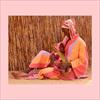
Tanzania
TANZANIA: Home deliveries contribute to mother, child deaths
TANZANIA: Anti-malarial drugs too expensive - minister
TANZANIA: The downside of an economic boom
TANZANIA: Vaccination campaign treats millions of children
TANZANIA: Cholera kills four in northern districts
TANZANIA: Govt issues RVF alert
United Republic of Tanzania
Geography
Capital: Dar es Salaam (traditional capital), Dodoma (location of legislature)
Major Towns: Dar es Salaam, Zanzibar, Songea, Arusha, Lindi, Musoma
Location (geographical coordinates/latitude and longitude): 6 00 S, 35 00 E
Time Zone: EAT
Size (Land and Sea): 945,087 km² , Water 6.2%
Borders with Kenya, Uganda, Rwanda, Burundi, Democratic Republic of the Congo, Zambia, Malawi, Mozambique, Indian Ocean
Elevation extremes: Highest point: 4,600 metres (Mount Kilimanjaro)
Politics
Head of State: Jakaya Kikwete (2005); Prime Minister: Mizengo Pinda (2008)
Form of Government: Republic
Independancy (from UK): Tanganyika (December 9, 1961), Zanzibar (January 12, 1964 ). Merged in April 26, 1964
Currency: Tanzanian Shilling
Industry
Main industries: Processing agricultural products (sugar, beer, cigarettes, sisal twine) and light consumer goods; Commercial production of natural gas
Other industries: diamond, gold, and iron mining, salt, soda ash; cement, oil refining, shoes, apparel, wood products, fertilizer.
Natural resources: hydropower, tin, phosphates, iron ore, coal, diamonds, gemstones, gold, natural gas, nickel
Agriculture: coffee, sisal, tea, cotton, pyrethrum (insecticide made from chrysanthemums), cashew nuts, tobacco, cloves, corn, wheat, cassava (tapioca), bananas, fruits, vegetables; cattle, sheep, goats
Population and People
Population: 38,139,640 (2007 est.); 37,849,133 (2006); 34,443,603 (2002)
Population density per sq mi: 111
Growth rate: 1.8% (2007 est.)
Birth rate: 37.3 births/1,000 population (2007 est.)
Total fertility rate: 4.77 children born/woman (2007 est.)
Infant mortality rate: 94.5/1000
Religion: Muslims: 35%, Christians: 30%, 35% traditional faiths
Languages: Swahili, English, Indian languages, especially Gujarati, and Portuguese
Ethnic groups / Tribes: More than 120 ethnic groups, (Sukuma, Haya, Nyakyusa, Nyamwezi, Chagga, Pare, Sambaa or Shambala, Ngoni), many Bantu origins. Non-Africans residing on the mainland and Zanzibar account for 1% of the total population. The Asian community, including Hindus, Sikhs, Shi'a and Sunni Muslims, Parsis and Goans, has declined by 50% in the past decade to 50,000 on the mainland and 4,000 on Zanzibar. An estimated 70,000 Arabs and 10,000 Europeans still reside in Tanzania. In the 1960s and 1970s thousands of Asians emigrated, frequently under duress. Often they attempted to emigrate to the United Kingdom (Britain).
Age structure: 0-14 years: 43.9% (male 8,666,227/female 8,624,387); 15-64 years: 53.3% (male 10,330,727/female 10,649,507); 65 years and over: 2.8% (male 491,252/female 622,123) (2007 est.)
Life expectancy: 46.1
Literacy: Total population: 67.8%, male: 79.4%, female: 56.8% (1995 est.)
coming
 Text Area - Tanzania
Text Area - Tanzania Content List - Tanzania News
Content List - Tanzania News

 Map - Tanzania Map
Map - Tanzania Map